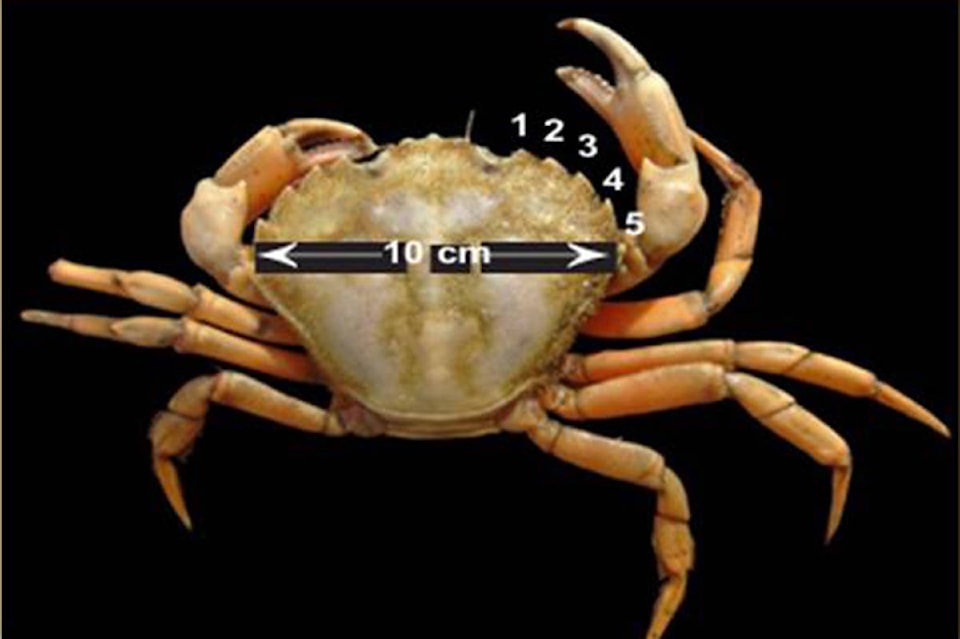While residents report spotting an invasive crab in Sooke, the Department of Fisheries and Oceans Canada (DFO) says they’re aware, but do not have enough data to know if we have an invasion in our waters.
European Green Crabs, identifiable by five spines to the outside of each eye, are one of the 10 most unwanted species in the world according the DFO website.
Patty Menning, a member of the Aquatic Invasive Species program with DFO, says the crabs will compete with natives species for food and will dig for inter-tidal vegetation making them a nuisance on the shoreline.
READ MORE: Ocean ‘blob’ returns to B.C.’s North Coast
“It’s definitely something we don’t want in our waters,” said Menning.
The European Green Crab has been found on the West Coast of Vancouver Island and some Mainland areas on the Central Coast of B.C. since 2007, but was only found in Sooke six years ago.
Menning is one of 13 people working nationally on early detection programs for the European Green Crab. One of the most recent new spotting of the invasive crab was in Witty’s Lagoon in the Metchosin area, found by a Grade 9 student who was fishing with a friend.
READ MORE: Alberni Valley ocean advocate document shark necropsy
“Luckily he photographed it and sent it to [us], then we conducted a further assessment of where he saw them and found two more Green Crabs,” said Menning. “We did a full eradication effort last fall and found one more adult.”
Menning and the Invasive Species program will go back this spring to make sure no other crabs have made a home of the lagoon.
Jeremy Wilkes, a local fishing enthusiast, said he’s seen these crabs many times before in the Sooke area.
“Every time we’ve gone out for the past few months they get caught,” said Wilkes. “In a morning [we catch] between one and four, some days more, some days less.”
Signs along the Sooke boardwalk and the Fisheries website helped Wilke identify the critters that he “stomps them and kicks them back down to the ocean to feed the rest of the crabs” when he finds them.
According to Menning the best thing to do if you do stumble across these crabs is to photograph it, note the time and location of the crab and email that information to the DFO.
“We collect the crabs, we take DNA and RNA samples to try and figure out where the population came from,” said Menning. “Then we dispose of them so they cannot impact any other watercourse.”
Ladine Hoffarth was out crabbing with some friends three weeks ago and says it wasn’t long before they noticed the strange looking crab.
“I just thought it was neat and tiny, and I had never seen anything that looked like it,” said Hoffarth. “Nobody else had either.”
Hoffarth took a photo of the crab before throwing it back. Black Press sent Hoffarth’s photo to Manning who confirmed it was a European Green Crab.
Menning says the name can be misleading as the crabs aren’t always green, their actual colour can vary from dark mottled green to orange or red.
“We have a lot of crabs on our Pacific Coast that are actually green,” said Menning, adding mis-identification of the crabs happens often. “They have five points on either side of their eye which is a distinctive characteristic.”
For more information on the European Green Crab visit dfo-mpo.gc.ca or email your photos to AISPacific@dfo-mpo.gc.ca.
kendra.crighton@blackpress.ca
Follow us on Instagram Like us on Facebook and follow us on Twitter.
